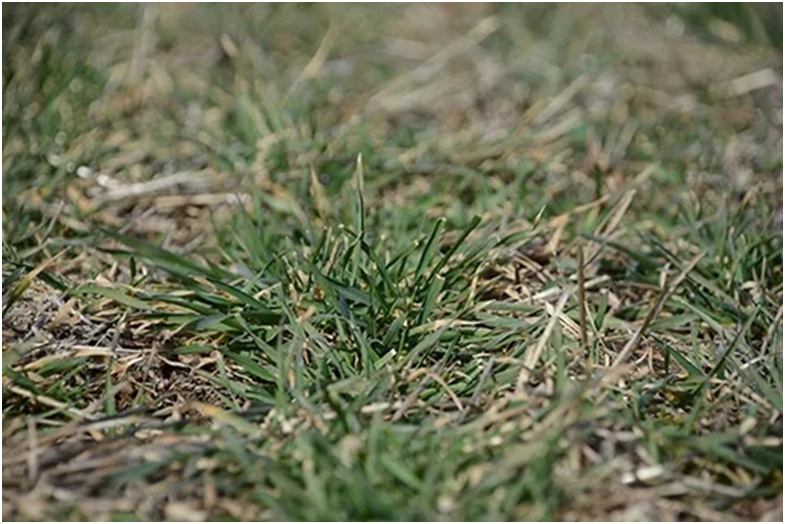
Exhibition time: 17-19 March, 2025 Shanghai, China
 中文
中文

Exhibition time: 17-19 March, 2025 Shanghai, China
 中文
中文
As the fourth-most important nutrient, sulfur plays an important role in the formation of amino acids, proteins, and oils and is critical in chlorophyll formation. Nitrogen and sulfur are linked to a degree, because sulfur plays a role in the activation of the enzyme "nitrate reductase," which helps convert nitrates to amino acids. Therefore, nitrogen use efficiency may be reduced if sulfur is deficient, Ruiz Diaz says.

Sulfur is the fourth-most important nutrient in wheat production, behind nitrogen, phosphorous, and potassium. Wheat farmers used to get sulfur for free from rainfall, but efforts to clean factory emissions of sulfur have dramatically reduced the amount of atmospheric sulfur that falls on farms.
Therefore, farmers have to add sulfur to their crops, says Dorivar Ruiz Diaz, soil fertility specialist at Kansas State University.
But first, you should know what S deficiency in wheat looks like.
"Generally, S-deficient wheat is yellow and stunted and is observed in patches in the field, especially in areas where there has been previous soil erosion or soil movement," Ruiz Diaz explains. You may find S-deficient areas on hilltops or sideslopes where erosion has occurred and soil organic matter has decreased. Or, wheat in areas where topsoil was removed or cuts were made – such as terraced or leveled fields – also may show symptoms, he adds.
But beware: S deficiency in growing crops is often mistaken for nitrogen (N) deficiency. Unlike N deficiency, however, where older leaves show firing and yellowing, "With sulfur deficiency, the pale yellow symptoms often appear first on the younger or uppermost leaves," Ruiz Diaz explains. "Wheat plants with S deficiency eventually become uniformly chlorotic."
Timing of symptom observations
Sulfur deficiencies in wheat have been showing up early in the spring, shortly after green-up, before organic S is mineralized from soil organic matter, and before wheat roots can grow into the subsoil to utilize any available S (sulfate) accumulations. "Deficiencies of S are often difficult to identify because the chlorosis is not always obvious," Ruiz Diaz warns. "Crops lacking S also may be stunted, thin-stemmed, and spindly. In the case of wheat and other cereal grains, maturity is delayed. Winter annual weed competition is also enhanced due to the slower growth and lack of good tillering."
In the northern stretch of the Winter Wheat Belt, fields have an established history of S deficiency for wheat. Farmers may want to consider a winter topdress application of S as a preventive measure.
What sulfur products to use
There are many S-containing fertilizer materials that work well for an in-season application that corrects sulfur deficiency:
•Ammonium sulfate, AMS (21-0-0-24S) is a dry material that is a good source of both N and S. However, it has high acid-forming potential and soil pH should be monitored. Ammonium sulfate is a good source to consider for either pre-plant or topdressing to correct existing sulfur deficiencies.
•Gypsum (analysis varies) is calcium sulfate and is commonly available in a hydrated form containing 18.6% S. This material is commonly available in a granulated form that can be blended with other materials. Since it is a sulfate source, it would be immediately available and is another good source for spring topdressing. However, gypsum is not as water soluble as many fertilizer materials such as ammonium sulfate.
•New N-P-S products such as Microessentials, 40-rock, and others that are typically ammonium phosphate materials formulated with S, and in some cases micronutrients such as zinc. In most of these products, the S is present as a combination of elemental S and sulfate.
Liquid fertilizer products include:
•Ammonium thiosulfate, ATS, (12-0-0-26S) which is the most popular S-containing product used in the fluid fertilizer industry as it is compatible with N solutions and other complete liquid products.
•Potassium thiosulfate, KTS, (0-0-25-17S) a clear liquid product that can be mixed with other liquid fertilizers.
Ruiz Diaz notes that topdressing wheat with thiosulfate and UAN can be done early, in the spring, before Feekes 5 growth stage (green up), and at temperatures below 70°F. This is a good time to apply S, as both N and S are similar in terms of mobility, availability, and uptake by the wheat, he says.
"Ideally any type of streamer nozzle (three-stream fertilizer nozzle) or streamer bars should be used, particularly if you will be putting N with it, to avoid leaf burn," Ruiz Diaz says. "But if you also want to put herbicide on, you will need to use the regular flat fan nozzle, so that is always a limitation."
From Successful farming
Previous: New sustainable way to synthesize vital fertilizer UREA
Next: Polyphosphate